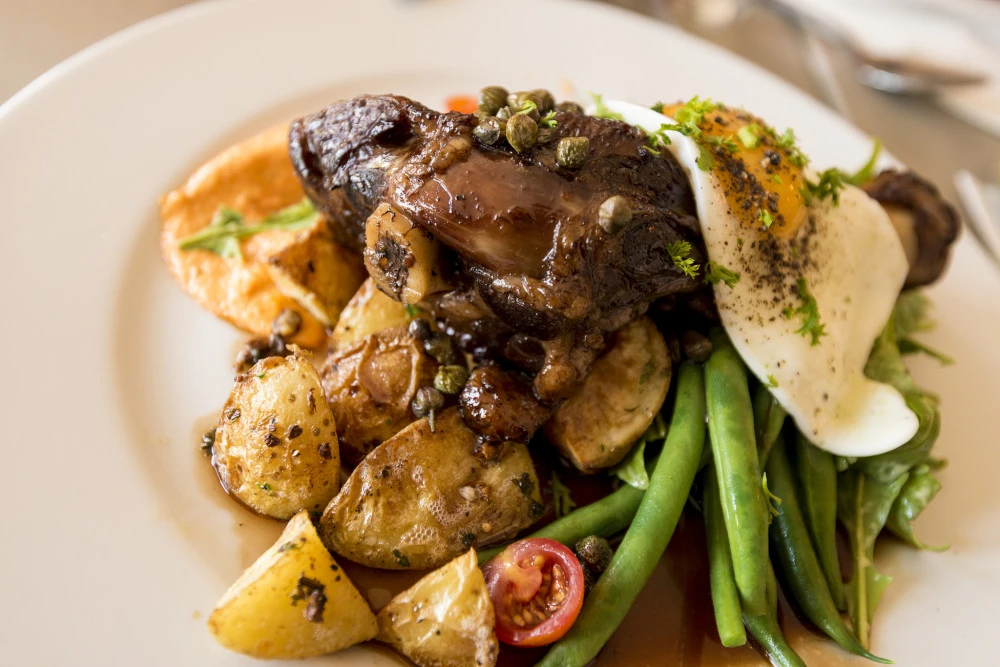French and Italian cuisines, both known for their rich culinary traditions, have distinct characteristics that set them apart. Here are some key differences between the two:
- Cooking techniques: French cuisine is known for its elaborate and sophisticated cooking techniques, such as sautéing, poaching, and roux-based sauces. In contrast, Italian cuisine tends to focus more on simplicity, with an emphasis on fresh ingredients and straightforward preparation methods like grilling, roasting, or slow-cooking.
- Sauces: French cuisine is famous for its wide range of sauces, many of which are made with butter, cream, or wine as a base. Some well-known examples include béchamel, hollandaise, and bordelaise sauces. Italian cuisine, on the other hand, relies more on olive oil-based sauces, with tomato sauce being the most iconic. Other popular Italian sauces include pesto, carbonara, and aglio e olio.
- Cheese: Both French and Italian cuisines feature a wide variety of cheeses. However, French cheeses, like Camembert, Brie, and Roquefort, tend to be creamier and more pungent. Italian cheeses, such as mozzarella, Parmesan, and ricotta, are generally milder and often used as key ingredients in dishes like pasta, pizza, and lasagna.
- Bread: French bread, like the classic baguette, is typically crusty on the outside and soft on the inside. In Italy, breads such as ciabatta, focaccia, and pane di casa are more common, with different textures and flavors depending on the region.
- Wine: Both countries are renowned for their wine production, but they have different preferences in terms of grape varieties and wine styles. French wines, such as Bordeaux, Burgundy, and Champagne, are typically more elegant and refined. Italian wines, like Chianti, Barolo, and Prosecco, tend to be more rustic and robust.
- Regional variations: Both French and Italian cuisines have strong regional identities, influenced by local ingredients and traditions. French cuisine varies from the seafood-heavy dishes of coastal regions like Brittany to the rich, hearty fare of inland areas like Alsace. Italian cuisine ranges from the seafood and tomato-based dishes of the southern regions to the richer, meatier dishes found in the north.
- Presentation: French cuisine often places a strong emphasis on presentation, with dishes carefully plated and garnished to create a visually appealing experience. Italian cuisine tends to be more rustic in its presentation, with a focus on the natural beauty of the ingredients themselves.
- Influence on other cuisines: French cuisine has had a significant impact on the development of other Western cuisines, particularly in terms of techniques and culinary education. Italian cuisine has also been influential, particularly in the spread of pasta and pizza dishes around the world.
- Use of herbs and spices: French cuisine often relies on a subtle combination of herbs and spices, with a preference for herbs like thyme, rosemary, and tarragon. Italian cuisine, in contrast, favors more robust herbs such as basil, oregano, and parsley. The use of garlic is also more prominent in Italian dishes.
- Pastries and desserts: French cuisine is renowned for its wide variety of pastries and desserts, such as croissants, éclairs, and crème brûlée. French patisseries are known for their artful creations and delicate flavors. Italian desserts, like tiramisu, panna cotta, and cannoli, are also well-loved, but tend to be less elaborate and more focused on the combination of simple, quality ingredients.
- Culinary philosophy: French cuisine is often associated with haute cuisine, which emphasizes the refinement and technical skill of the chef. This approach can be seen in the precise execution of dishes and the importance of presentation. Italian cuisine is more focused on the concept of “cucina povera,” or “peasant cooking,” which values simplicity, the use of seasonal ingredients, and the preservation of traditional recipes.
- Proteins: In French cuisine, a wide variety of proteins are used, including beef, poultry, pork, game, and seafood. French dishes often feature rich, slow-cooked meats, such as coq au vin or boeuf bourguignon. Italian cuisine also uses a variety of proteins, but with a stronger emphasis on seafood, particularly in coastal regions. Italian dishes often include simpler preparations, such as grilled fish or seafood pasta.
- While French and Italian cuisines have their unique characteristics, they share a common love for quality ingredients, a deep respect for culinary traditions, and a passion for sharing their food culture with the world.
